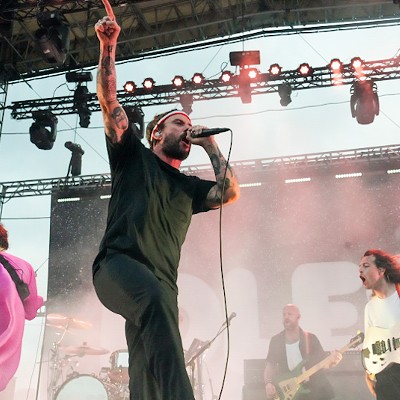The best part of show biz biographies tends to be the first part, when the protagonist, often coming from humble circumstances, overcomes challenges and realizes long-held ambitions. Before, that is, succumbing to the temptations of stardom and turning into a jaded, bitter, drug-addicted mess.
Author Ken McNab has already written the not-so-fun part of the Beatles story in his 2020 book And in the End, which documents Beatlesdämmerung. This time around, McNab pulls a 180 and concentrates on the year before the Beatles became an international phenomenon in the just-released Shake It Up, Baby!: The Rise of Beatlemania and the Mayhem of 1963 (Pegasus Books, 416 pp., $32).
Do we really need another book about the Beatles? My bookshelves groan under the weight of dozens of volumes providing more information about the Fab Four than any reasonable person needs to possess. I even have a copy of Mark Shipper’s Paperback Writer, a fictional Beatles biography in which the band reunites in the late 1970s, produces an incredibly crappy album, and ends up opening for the Sex Pistols at Dodger Stadium. Not to mention Recording the Beatles : The Studio Equipment and Techniques Used to Create Their Classic Albums by Kevin Ryan & Brian Kehew, a mammoth geek fest that details all of the gear that the Beatles used in the studio, from mixing consoles and tape decks down to the last microphone.
Returning to the initial rhetorical question, we already have Mark Lewisohn’s Tune In: The Beatles: All These Years, a doorstop of a book (I suppose that’s why the title contains two colons) that represents the first volume in a projected trilogy and covers the Beatles’ story up until their worldwide explosion. What does McNab give us that Lewisohn hasn’t already provided?
Not a ton, as it turns out. McNab’s book doesn’t contain any significant new information. However, McNab tells a great story (granted, he has primo material to work with), putting the reader right in the middle of the Beatles phenomenon just before things went really nuts.1962 came to an end with the Beatles closing out their now-legendary stint as a bar band in Hamburg, a city which offered the young lads any number of temptations, including booze, pills and whores. All were thoroughly enjoyed for a time, but as 1963 began, the Beatles were returning to England, ready to conquer the world. At least that was their plan.
tweet this
By hyperfocusing on just one year in the Beatles saga (and isn’t it wild to consider that the band was only in existence from 1960 until 1970?), McNab is able to supply a level of detail that is significantly more granular than what is found in most Beatles bios.
1962 came to an end with the Beatles closing out their now-legendary stint as a bar band in Hamburg, a city which offered the young lads any number of temptations, including booze, pills and whores. All were thoroughly enjoyed for a time, but as 1963 began, the Beatles were returning to England, ready to conquer the world. At least that was their plan.
Their manager, Brian Epstein, worked his charges hard, booking around 290 live performances during 1963. During this time, the Beatles' star was still ascending, and gigs that were agreed upon for modest sums at the beginning of the year were, in effect, costing the band money by the time summer rolled around.
Nonetheless (perhaps owing to the fact that he was a neophyte in the music business), Epstein honored all commitments at the agreed-upon price, which occasionally left the Beatles in an unusual position, like the time that they were booked to play at the Stowe School, a private academy for boys, while “Please Please Me” was rocketing up the charts. This gig was significant, in that the audience was exclusively male, meaning that the feminine screams which usually accompanied a Beatles performance were absent. Consequently, a recently discovered tape of the concert now stands as one of the few listenable documents of this era.
The Beatles’ rapid ascent in popularity caused problems when they were placed on package tours featuring multiple acts. McNab details squabbles (and even a fistfight or two) between the boys and Tommy Roe (“Sheila”) and Chris Montez (“Let’s Dance”). The disagreements were over who was going to close the show, due to the fact that the Beatles were obliterating the acts at the top of the bill. When this issue raised its head during a tour with Roy Orbison, the old pro squawked at first but then realized that he was getting paid more than the Liverpudlians - regardless of the performance order - and that following the hypermanic Beatles with his set full of ballads was downright dumb.
Though Shake It Up doesn’t excoriate John Lennon to the extent of Albert Goldman’s 1988 biography The Lives of John Lennon, the prickly Beatles doesn’t come off too well in McNab’s telling. Lennon was an angry drunk, McNab writes, given to humiliating people when he was in his cups and sometimes engaging in physical violence. This sort of behavior is said to have disgusted Paul McCartney, who, in these instances, would refer to his bandmate as “that Lennon.”
While Shake It Up, Baby! relies on previously published sources (not that there’s anything wrong with that), McNab is inconsistent when it comes to giving credit. The book contains no list of sources. Granted, it does not purport to be a scholarly work, but still. In some cases, McNab provides an in-text citation, but in others – such as an uncredited reference to Jonathan Cott’s well-known Rolling Stone interview with Lennon conducted shortly before he was murdered – McNab inexplicably fails to mention the source.
What McNab's book does well is to give the reader a sense of the moment, along with a picture of the Beatles when they still had to worry about where to find a fish and chips joint that was open after the gig. McNab does a fine job of conveying the enthusiasm and the (relative) innocence that permeated the Beatles vibe as they stood on the precipice.
In fact, the session that produced the cover photo for the EP Twist and Shout made the metaphor real. Photographer Fiona Adams came up with the idea of posing the Beatles at the edge of a World War II bomb crater in London and having the boys jump up in the air.
“They were wearing Cuban-heeled boots,” Adams is quoted as saying, “and there was lots of rubble around up there, so it probably wasn’t very safe, but they did it beautifully. Each of them jumped in a different style, as if they’d been practicing. Their career hadn’t quite taken off yet but it did after that. I remember someone coming out of the building while we were doing it and asking who they were.”
“The results were,” McNab writes, “among the most captivating and carefree images yet of the early Beatles in all the unfiltered joy of their youthful effervescence.”








